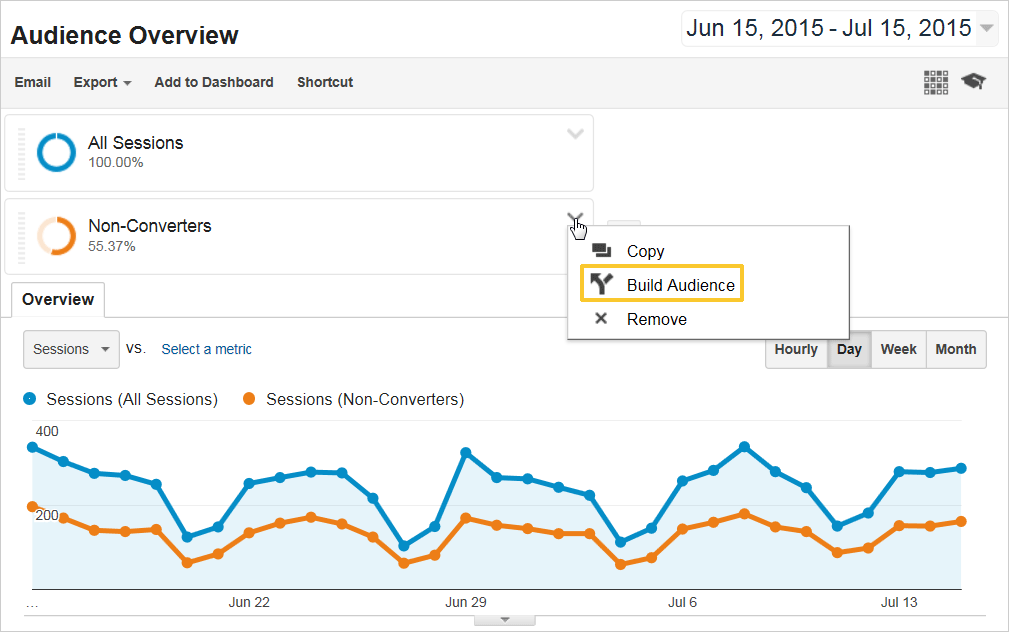Step-by-Step Tutorial: Remarketing In Google Analytics
Step-by-Step Tutorial: Remarketing In Google Analytics
Blog Article
Taking Advantage Of Remarketing in Google Analytics: A Comprehensive Overview
Harnessing remarketing in Google Analytics offers businesses a critical side in reaching out to possible customers. This guide will certainly lose light on the essential steps entailed in using the complete capacity of remarketing in Google Analytics, leading to improved advertising outcomes.
Recognizing Remarketing in Google Analytics
Remarketing in Google Analytics permits companies to strategically target individuals that have formerly connected with their web site or mobile app. By leveraging data from Google Analytics, organizations can create personalized remarketing checklists based on individual actions, such as pages seen, actions taken, or details goals attained. This powerful device makes it possible for companies to re-engage with individuals that have shown passion in their solutions or items, eventually raising the likelihood of conversion.
Understanding the different kinds of remarketing approaches is critical for a successful project - What Is “Remarketing” In Google Analytics?. Google Analytics provides numerous choices, including typical remarketing, vibrant remarketing, and remarketing listings for search advertisements (RLSA) Each type serves a special function and can be customized to meet details advertising goals
Moreover, evaluating the performance of remarketing campaigns is essential for optimizing outcomes. Google Analytics gives important insights into the efficiency of various remarketing approaches, permitting organizations to make data-driven choices and fine-tune their targeting method. By constantly adjusting and checking remarketing efforts based upon analytics data, organizations can maximize ROI and drive success in their advertising and marketing campaigns.
Establishing Up Remarketing Campaigns

After establishing audience lists, the next action is to connect Google Analytics with Google Ads. By linking these two platforms, companies can flawlessly move target market lists from Google Analytics to Google Ads for remarketing objectives. This assimilation enables more exact targeting and better project performance.
As soon as the accounts are linked, services can create remarketing projects in Google Ads utilizing the target market notes formerly specified in Google Analytics. These projects can be personalized with particular ad creatives, messaging, and bidding approaches to successfully re-engage with past visitors and drive conversions. By complying with browse around here these actions, companies can take advantage of the power of remarketing to improve their advertising efforts and enhance ROI.
Utilizing Target Market Segmentation Methods

Predefined sections in Google Analytics allow you to quickly assess typical audience groups fresh customers, returning individuals, or users who completed a particular goal on your site. Custom sections, on the other hand, enable you to create distinct sections based upon particular standards that are necessary to your business goals. Dynamic remarketing checklists immediately change based upon individual behavior, revealing individualized ads to users that have interacted with your site particularly means.
Studying Remarketing Performance Metrics
Upon assessing the performance of remarketing projects in Google Analytics, the evaluation of essential performance metrics gives useful insights into target market involvement and conversion home prices. By diving into metrics such as click-through prices (CTR), conversion prices, expense per purchase (CPA), and return on advertisement invest (ROAS), online marketers can gauge the success of their remarketing initiatives. Analyzing these metrics enables marketing experts to enhance projects, improve audience targeting, and allot budget plans properly to boost total remarketing performance.
Optimizing Remarketing Strategies
When refining remarketing methods in Google Analytics, concentrating on audience segmentation is paramount for attaining project success. By separating your target market right into particular sections based on their habits, demographics, or passions, you can customize your ads much more efficiently to every team. This targeted technique enhances the chance of engaging customers that have already shown rate of interest in your services or items, leading to greater conversion prices.
An additional crucial element of maximizing remarketing strategies is constantly screening and refining your projects (What Is “Remarketing” In Google Analytics?). A/B testing different advertisement creatives, messaging, or deals can aid you recognize what reverberates ideal with your target market and drives one of the most conversions. By assessing the performance of these examinations in Google Analytics, you can make data-driven choices to maximize your remarketing efforts even more
In addition, leveraging vibrant remarketing can considerably enhance your project results. This attribute permits you to show personalized advertisements to users based upon their previous communications with your internet site, showcasing services or products they have formerly viewed. By delivering tailored web content to individuals based on their interests and behaviors, dynamic remarketing can help enhance interaction and drive conversions.
Final Thought
To conclude, utilizing remarketing in Google Analytics is a tactical approach to target individuals who have actually formerly engaged with a website. By developing tailored audience listings and utilizing audience segmentation methods, businesses can optimize remarketing projects for enhanced conversion rates. Evaluating efficiency metrics and continually enhancing approaches are crucial for making the most of the efficiency of remarketing efforts.
Google Analytics uses numerous choices, consisting of basic remarketing, dynamic remarketing, and remarketing listings for search advertisements (RLSA)After establishing up target Discover More market lists, the following action is to connect Google Analytics with Google Ads. By connecting these 2 platforms, companies can effortlessly move audience lists from Google Analytics to Google Ads for remarketing objectives.When the accounts are connected, services can create remarketing campaigns in Google Ads using the audience provides formerly specified in Google Analytics.When refining remarketing techniques in Google Analytics, concentrating on audience division is critical for achieving project success.
Report this page